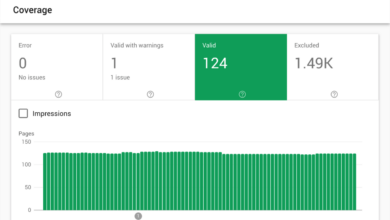
Email Marketing Campaign Your Ultimate Guide
Email marketing campaign is a powerful tool for businesses to connect with their audience and drive conversions. This comprehensive guide takes you through every stage, from planning and content creation to execution and analysis, equipping you with the knowledge and strategies needed for a successful email marketing campaign.
We’ll explore the crucial aspects of defining your target audience, setting clear goals, and crafting compelling email content. We’ll delve into email list management, campaign execution, and the vital role of data analysis in optimizing your email marketing campaign’s performance.
Campaign Planning and Strategy

Crafting a successful email marketing campaign requires meticulous planning and execution. It’s not just about sending emails; it’s about understanding your audience, setting clear goals, and consistently optimizing your strategy for maximum impact. This detailed guide will cover every phase, from initial concept to post-launch evaluation.A well-structured email marketing campaign goes beyond simply sending out messages. It involves understanding the audience, defining specific goals, selecting appropriate campaign types, segmenting the audience for personalization, and employing effective strategies like A/B testing and automation.
Creating a Successful Campaign
A successful email marketing campaign hinges on a robust plan that encompasses all stages from inception to post-launch analysis. This meticulous process ensures the campaign achieves its objectives and delivers a positive return on investment.
- Ideation and Planning: Clearly define the campaign’s purpose, target audience, and desired outcomes. Establish a realistic timeline and budget for the campaign’s duration.
- Audience Segmentation: Divide the email list into distinct segments based on demographics, psychographics, and online behavior. This enables personalized communication tailored to each segment’s needs and interests.
- Goal Setting and Metrics: Define quantifiable goals, such as increasing open rates, click-through rates, or conversions. Establish key performance indicators (KPIs) to track progress throughout the campaign and assess its effectiveness.
- Campaign Launch and Optimization: Implement the campaign, monitoring key metrics regularly. Use A/B testing to refine email content and subject lines, and adjust strategies based on performance data.
- Post-Launch Evaluation: Analyze campaign results against the established goals and KPIs. Identify areas for improvement and refine future strategies based on insights gained from the campaign’s performance.
Identifying the Target Audience
Understanding your target audience is paramount for effective email marketing. It involves delving beyond basic demographics to uncover motivations, preferences, and online behavior.
- Demographics: Consider age, gender, location, occupation, and income level to create a general profile of your ideal customer. For instance, a campaign targeting young professionals might focus on different content compared to a campaign targeting retirees.
- Psychographics: Analyze lifestyle, values, interests, and personality traits. Understanding what motivates your audience allows for more engaging and relevant content, like highlighting specific benefits aligned with their aspirations.
- Online Behavior: Track website activity, social media engagement, and browsing history to understand how your audience interacts with your brand online. This data reveals preferences and interests, which can inform email content and design.
Setting Clear Goals and Objectives
Defining clear goals and objectives is critical for measuring campaign success. Quantifiable metrics provide a framework for evaluating campaign performance.
- Open Rate: The percentage of recipients who open the email. A high open rate suggests the subject line and email preview text are compelling and relevant to the recipient.
- Click-Through Rate (CTR): The percentage of recipients who click on a link within the email. A high CTR indicates that the email content effectively encourages engagement.
- Conversion Rate: The percentage of recipients who complete a desired action, such as making a purchase or signing up for a newsletter. Conversion rates are a crucial measure of campaign effectiveness.
Email Marketing Campaign Types
Different campaign types serve distinct purposes and employ varying strategies. Understanding the nuances of each type helps tailor the message for maximum impact.
- Promotional Campaigns: Focus on driving sales and highlighting special offers. Use compelling visuals, clear calls to action, and limited-time incentives to encourage immediate action.
- Educational Campaigns: Share valuable information and insights related to your industry or products. Establish thought leadership and foster trust by providing informative and engaging content.
- Transactional Campaigns: Automate communication triggered by specific actions, such as order confirmations, password resets, or welcome messages. These campaigns ensure timely and relevant communication with customers.
Segmenting Email Lists for Personalization
Segmenting email lists enables personalized communication, fostering stronger customer relationships and driving higher engagement. It involves grouping recipients based on shared characteristics and preferences.
- Demographics: Grouping by age, location, or gender.
- Purchase History: Targeting customers who have purchased specific products or categories.
- Website Behavior: Segmenting based on pages visited, products viewed, or time spent on site.
Email Marketing Campaign Strategies Comparison
This table Artikels various strategies and their respective benefits:
| Strategy | Description | Benefits |
|---|---|---|
| A/B Testing | Testing different versions of email elements (subject lines, calls to action) to identify the most effective variations. | Improved engagement metrics, higher conversion rates. |
| Email Automation | Automating email sequences triggered by specific events (e.g., abandoned carts, welcome series). | Increased efficiency, personalized customer journeys, consistent engagement. |
| Personalization | Tailoring email content to individual recipient preferences and behaviors. | Higher engagement rates, improved customer satisfaction, increased conversion rates. |
Content Creation and Design
Crafting compelling email campaigns requires more than just a pretty template. It’s about understanding your audience and crafting messages that resonate, ultimately driving conversions. This section delves into the essential elements of email content creation, from captivating subject lines to persuasive calls to action and effective visual strategies.Effective email content is crucial for engagement. It should not only be visually appealing but also convey a clear message, making it easy for the recipient to understand and act upon.
By focusing on clarity, conciseness, and a strong call to action, your emails will be more effective in achieving their intended goals.
Email marketing campaigns are a powerful tool for boosting sales, but knowing what products to promote is key. To find the hottest, trending items on Amazon, check out these top-tier research tools – like 10 best amazon product research tools online. Armed with this intel, your email campaigns can focus on products with high demand, maximizing your return on investment and driving more sales.
It’s all about smart targeting, after all!
Compelling Email Subject Lines
Subject lines are the first impression your email makes. A compelling subject line is critical for maximizing open rates. It should be concise, intriguing, and relevant to the recipient. Avoid spammy words or misleading information. Instead, use words that create curiosity and encourage recipients to open the email.
Examples include personalized subject lines referencing past interactions, or subject lines that highlight a specific benefit or value proposition.
Effective Email Body Content
The body of the email is where you deliver the message. The tone and style should align with your brand voice and resonate with your target audience. Use a conversational and friendly tone, avoiding overly formal language. Maintain a clear and concise style, using bullet points, headings, and short paragraphs to improve readability. Weave in persuasive language that motivates action, focusing on the benefits for the recipient.
Importance of Calls to Action
Calls to action (CTAs) are crucial for guiding recipients towards desired actions. Clearly defined CTAs with compelling language encourage clicks and conversions. Use action-oriented verbs like “Learn More,” “Shop Now,” or “Sign Up.” Ensure CTAs are visually distinct from the rest of the email content, and place them strategically within the email body.
Visuals in Email Marketing
Visuals play a vital role in email marketing. They can increase engagement, improve readability, and convey your brand message more effectively. Incorporate high-quality images, relevant videos, and engaging GIFs. Ensure images are optimized for email display, and consider using animated GIFs for promotional campaigns or to highlight product features. Remember to keep visuals relevant to the content and avoid distracting or overwhelming elements.
Email marketing campaigns are a powerful tool, but maximizing their impact requires targeted strategies. A crucial part of that is creating remarketing lists using Google Analytics. By leveraging data from your website traffic, you can identify users who have shown interest in your products or services, enabling you to create highly-targeted email campaigns that resonate with those specific segments.
This refined approach will significantly boost your campaign’s effectiveness and ROI. For detailed steps on how to create remarketing lists using Google Analytics, check out this guide: create remarketing lists using google analytics. Ultimately, this will lead to more engaged subscribers and a higher conversion rate in your email marketing campaigns.
Email Template Examples
Different email marketing campaign goals require tailored templates. For example, a welcome email template should focus on providing value and building a connection. A promotional email template could showcase new products or special offers, while a newsletter template provides valuable content and encourages engagement. Consider the context of the campaign and design the email template accordingly.
Email Design Elements and Engagement
| Design Element | Impact on Reader Engagement |
|---|---|
| Clear Visual Hierarchy | Improved readability and focus on key information. |
| Responsive Design | Ensures optimal viewing experience across different devices. |
| Whitespace | Enhanced readability and visual appeal. |
| High-Quality Images | Creates a visually appealing and engaging email. |
| Compelling Color Palette | Matches brand identity and improves visual appeal. |
Email List Management and Growth
Building a robust email list is crucial for any email marketing campaign. A high-quality list, filled with engaged subscribers, directly translates to higher open rates, click-through rates, and ultimately, better campaign performance. This dedicated section delves into the essential aspects of email list management, from initial growth to ongoing maintenance, ensuring your email campaigns are as effective as possible.Effective email list management goes beyond simply collecting addresses.
It encompasses strategies for attracting interested prospects, nurturing relationships, and maintaining a healthy subscriber base. The key is to focus on building a list of engaged individuals who are genuinely interested in your offerings, not just collecting as many addresses as possible. This approach maximizes the potential of your email marketing efforts.
Building a High-Quality Email List
A high-quality email list is the bedrock of successful email marketing. It’s not just about the quantity of subscribers, but the quality of those subscribers. Engaged subscribers are more likely to open, read, and respond to your emails, driving better results. Focus on attracting subscribers who are genuinely interested in your products or services.
Growing Your Email List
Effective strategies for growing your email list are vital for long-term success. These strategies should be integrated into your overall marketing plan.
- Website Sign-Ups: Clearly visible and easily accessible signup forms on your website are essential. Position them strategically, such as on landing pages, product pages, and blog posts, to maximize capture opportunities. Use compelling calls to action to encourage sign-ups. A well-designed signup form will collect essential information while keeping the user experience positive. This is often the most direct path to a new subscriber.
- Lead Magnets: Offer valuable content, such as ebooks, checklists, webinars, or templates, in exchange for email addresses. This is a proven method to attract qualified leads. Lead magnets need to offer genuine value to the user to be successful. Think about what your target audience would find useful and use that as your starting point. Highlighting the value proposition of the lead magnet is crucial for attracting sign-ups.
- Social Media Promotion: Promote your email list signup forms across your social media channels. Use engaging content to attract potential subscribers and drive them to your signup page. Social media posts should be visually appealing and highlight the benefits of joining your email list.
- Partnerships and Collaborations: Collaborate with complementary businesses or influencers to cross-promote your email list. This expands your reach and attracts a wider audience. Ensure your collaboration partners share a similar target audience to maximize the effectiveness of this strategy.
Cleaning and Segmenting Your Email List
Maintaining a clean and segmented email list is crucial for effective targeting. This approach maximizes the impact of your emails by ensuring they reach the right audience.
- Removing Inactive Subscribers: Regularly remove inactive subscribers from your list. This prevents your emails from being sent to accounts that are unlikely to engage. This improves deliverability and reduces your email marketing costs.
- Segmenting Your List: Segment your list based on various criteria, such as demographics, purchase history, or interests. This allows for targeted messaging that resonates with specific groups. Segmentation allows you to tailor content and offers to the needs of different groups, maximizing engagement.
- Regular List Audits: Regularly review your email list to identify and address potential issues. This will help you maintain a healthy email list. Regular audits are crucial for identifying and addressing issues that could impact email deliverability.
Managing Email Subscriptions and Unsubscribes
A clear and straightforward process for managing subscriptions and unsubscribes is essential. Providing a clear path for users to unsubscribe will build trust and improve your reputation.
- Clear Subscription Process: Ensure your subscription process is clear, concise, and easy to understand. Include all necessary information about how your subscribers will be using their information.
- Simple Unsubscribe Mechanism: Provide a clear and easy unsubscribe link within your emails. This is a crucial element in building trust with your subscribers. Make sure your unsubscribe process is as user-friendly as your signup process.
Avoiding Email Deliverability Issues
Preventing deliverability issues is crucial for maintaining a healthy email reputation. This will help to ensure your emails are received by your intended recipients.
- Email Provider Authentication: Implement email provider authentication (SPF, DKIM, and DMARC) to verify your sending domain. This will ensure your emails are delivered reliably.
- High-Quality Content: Ensure your email content is high quality and relevant to your subscribers. This helps improve engagement and avoid spam filters.
- Avoid Spam Triggers: Avoid using spam trigger words or phrases in your emails. These are often used to flag emails as spam.
Methods for Collecting Email Addresses
Various methods can be used to collect email addresses. Each has its own set of advantages and disadvantages.
| Method | Pros | Cons |
|---|---|---|
| Website Forms | Easy to implement, customizable, trackable | Can be intrusive, requires good design |
| Lead Magnets | High conversion potential, attracts qualified leads | Requires valuable content, potential for low conversion if not engaging |
| Social Media | Large reach, viral potential | Requires significant effort, may not always translate to direct signups |
| Partnerships | Broader audience reach, credibility | Requires finding compatible partners, can be time-consuming |
Campaign Execution and Optimization

Executing a successful email marketing campaign goes beyond simply crafting compelling content. It demands a meticulous approach to sending, tracking, and analyzing performance. This involves a proactive strategy to optimize every aspect of the campaign for maximum impact. The key lies in understanding the data, adapting to the results, and using technology to streamline the process.Email marketing campaigns need careful planning and execution to achieve desired outcomes.
Robust tracking and analysis are critical to understanding campaign effectiveness and identifying areas for improvement. This proactive approach allows for continuous optimization and ensures campaigns yield the best possible results.
Email Sending and Performance Tracking
To effectively send email marketing campaigns, you need a well-defined process. This includes scheduling campaigns to avoid overwhelming recipients with too many emails at once, or sending them at times when they are less likely to engage. Using a reliable email marketing platform is crucial for delivering campaigns effectively and ensuring proper delivery to recipients’ inboxes. Implementing a clear tracking mechanism to monitor campaign performance is essential.
This includes tracking key metrics like open rates, click-through rates, and conversions. This process will allow for a deep dive into campaign effectiveness and pinpoint areas needing adjustment.
Analyzing Campaign Data for Improvement
Campaign data analysis is not just about looking at numbers; it’s about understanding the underlying reasons behind those numbers. This analysis helps identify trends, patterns, and correlations that can lead to actionable insights. Analyzing open rates, click-through rates, and conversion rates allows marketers to assess what resonates with their audience and tailor future campaigns to improve engagement. For instance, if a specific email subject line consistently yields higher open rates, using similar wording in future campaigns can maximize results.
Detailed analysis can highlight the reasons for high or low engagement rates, such as issues with email design, content relevance, or target audience segmentation.
Strategies for Improving Engagement Metrics
Improving email open rates, click-through rates, and conversions requires a multi-faceted approach. Focusing on compelling subject lines that pique interest is crucial. Crafting personalized content tailored to recipient segments enhances engagement. Clear call-to-actions (CTAs) encourage recipients to take the desired action. Testing different versions of emails (A/B testing) can reveal what resonates best with the target audience.
For example, using different subject lines or CTAs in variations of the same email can demonstrate which approach generates higher open rates or click-through rates.
Email marketing campaigns are crucial for boosting engagement, but knowing your strengths and weaknesses is key. A thorough SWOT analysis, like the one detailed in this guide on the right way conduct swot analysis , helps pinpoint areas for improvement. By understanding your competitive landscape and internal capabilities, you can craft targeted campaigns that truly resonate with your audience and drive conversions.
Utilizing A/B Testing
A/B testing is a powerful tool for optimizing email campaigns. By comparing different versions of email elements, marketers can identify what performs best. This involves testing subject lines, email body content, CTAs, and even sender names to see which variations yield the highest engagement. For instance, A/B testing different subject lines for a promotional campaign can help determine which one garners the most opens and clicks.
Analyzing the results allows for targeted adjustments to future email campaigns, leading to better outcomes.
The Role of Email Marketing Automation Tools
Email marketing automation tools are essential for streamlining email marketing processes. They allow for the scheduling of emails, personalized communication based on recipient actions, and triggered emails for specific events. For example, sending a welcome email to new subscribers or a follow-up email to abandoned cart customers. These tools significantly increase efficiency and help marketers focus on strategic aspects of their campaigns.
Email Marketing Automation Tools
| Tool | Key Features |
|---|---|
| Mailchimp | Email marketing, automation, segmentation, analytics, landing pages |
| ActiveCampaign | Automation, CRM integration, personalization, sales funnels, analytics |
| ConvertKit | Email marketing, automation, landing pages, webinars, detailed analytics |
| Sendinblue | Email marketing, automation, SMS marketing, CRM, marketing automation |
| HubSpot | Marketing automation, CRM, sales, service, email marketing |
Measuring and Evaluating Campaign Success
Email marketing campaigns, like any marketing initiative, need rigorous evaluation to understand their effectiveness and identify areas for improvement. Success isn’t just about sending emails; it’s about achieving measurable results that align with your business objectives. Thorough measurement allows for data-driven decisions, enabling you to optimize future campaigns and maximize return on investment.A crucial element of successful email marketing is the ability to track and analyze key metrics.
This data provides insights into campaign performance, allowing you to identify what resonates with your audience and what needs adjustment. By meticulously monitoring these metrics, you can refine your strategies for greater impact and profitability.
Key Performance Indicators (KPIs) for Email Campaigns, Email marketing campaign
Understanding your campaign’s performance requires focusing on key metrics. These KPIs provide a comprehensive overview of campaign effectiveness, helping you assess various aspects of your email marketing strategy.
| KPI | Description | Importance |
|---|---|---|
| Open Rate | Percentage of recipients who opened the email. | Indicates the effectiveness of your subject lines and sender reputation in grabbing attention. |
| Click-Through Rate (CTR) | Percentage of recipients who clicked on a link within the email. | Measures the engagement level with your content and calls to action. |
| Conversion Rate | Percentage of recipients who completed a desired action (e.g., making a purchase, signing up). | Indicates the effectiveness of your email in driving desired outcomes. |
| Bounce Rate | Percentage of emails that couldn’t be delivered. | Highlights potential issues with your email list, such as incorrect email addresses or server problems. |
| Unsubscribe Rate | Percentage of recipients who opted out of receiving your emails. | Indicates audience satisfaction and helps you identify areas for improving email relevance. |
| Spam Complaints | Percentage of recipients who marked your email as spam. | Crucial for maintaining a healthy sender reputation and avoiding future deliverability issues. |
Utilizing Analytics Dashboards
Analytics dashboards provide a centralized view of your email marketing campaign performance. They visually represent key metrics, enabling quick identification of trends and patterns. Interactive dashboards allow for filtering, segmentation, and comparison of data, facilitating in-depth analysis.Visualizing data in dashboards helps you quickly identify which campaigns are performing well and which need attention. For example, a dashboard might highlight a significant drop in open rates for a specific campaign, prompting investigation into the subject line or email content.
Understanding the visual representation of data within a dashboard empowers you to make timely adjustments.
Analyzing Campaign Data and Identifying Areas for Improvement
Regularly analyzing campaign data is essential for continuous improvement. This process involves examining various metrics, identifying trends, and determining potential areas for optimization. Comparing different campaign variations helps in understanding which approaches resonate best with your target audience.For example, if you notice a high unsubscribe rate for a particular campaign, you might need to review the email content, subject lines, or the frequency of emails.
This iterative process of analysis and refinement will ensure your campaigns are highly effective.
Evaluating Email Marketing ROI
Calculating the return on investment (ROI) of email marketing involves comparing the revenue generated by campaigns to the costs associated with them. This process involves meticulous tracking of revenue generated directly or indirectly by email campaigns. For example, you can attribute sales to specific emails by tracking unique promotional codes or links.A higher ROI suggests that your email marketing efforts are producing substantial returns compared to the resources invested.
Conversely, a low ROI might indicate areas where improvements are needed in your email strategy. Consistent tracking of ROI is essential for demonstrating the value of your email marketing initiatives to stakeholders.
Ongoing Campaign Optimization and Adaptation
Email marketing is an evolving field. Maintaining relevance and effectiveness requires continuous monitoring and adaptation. This involves incorporating feedback from analytics, market trends, and evolving audience preferences.Stay updated with email marketing best practices and adapt your campaigns accordingly. This continuous optimization ensures your campaigns remain effective and aligned with your overall business goals. For example, new technologies or platform updates might introduce changes to email deliverability, prompting the need for adjustments to your sending strategy.
Conclusive Thoughts: Email Marketing Campaign
In conclusion, a successful email marketing campaign hinges on a well-defined strategy, engaging content, and meticulous execution. By following the steps Artikeld in this guide, you can build a robust email marketing strategy that drives results and strengthens your connection with your audience. We’ve covered the entire spectrum, from planning to optimization, to ensure you have all the tools you need to create a truly effective email marketing campaign.




